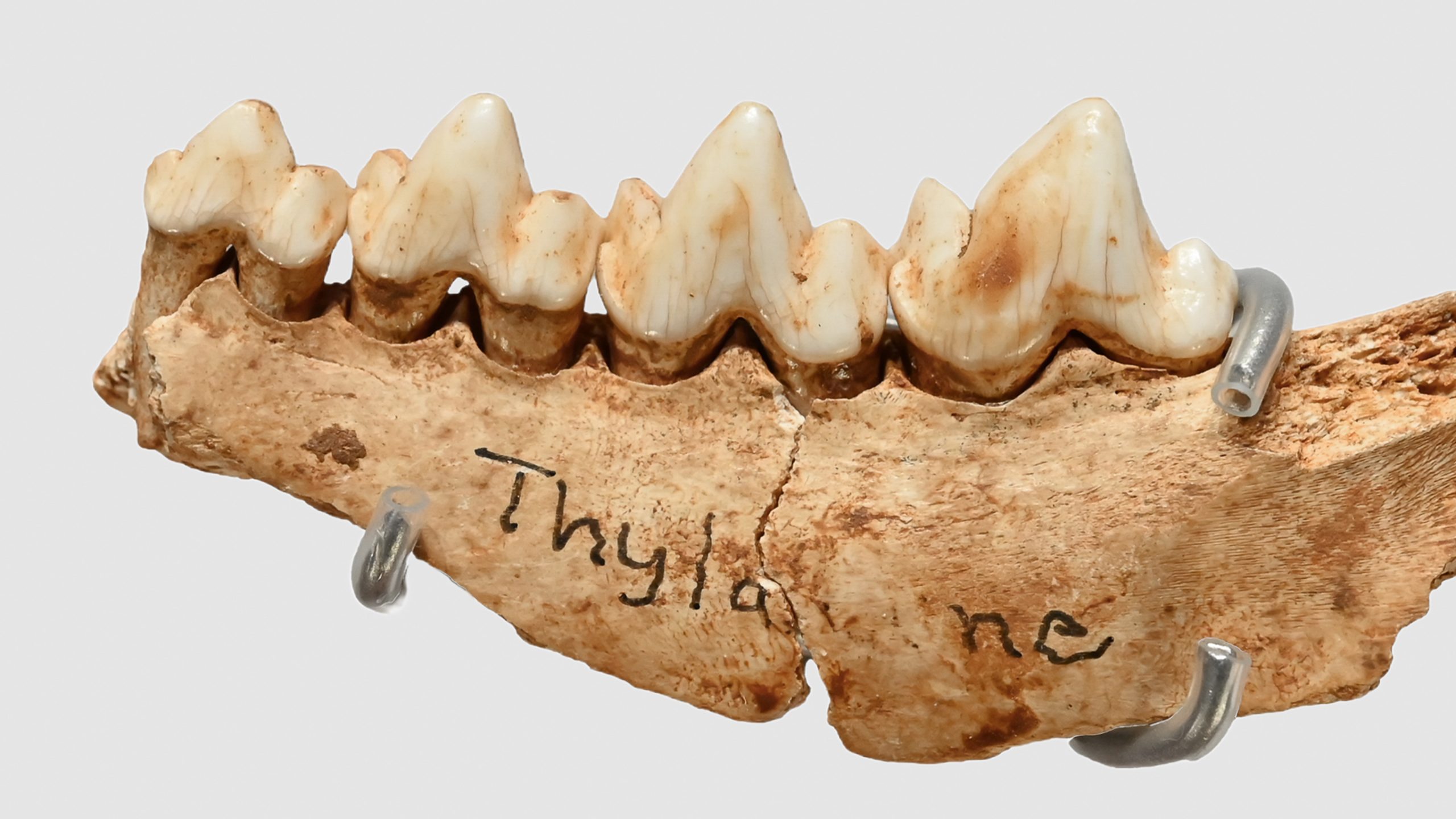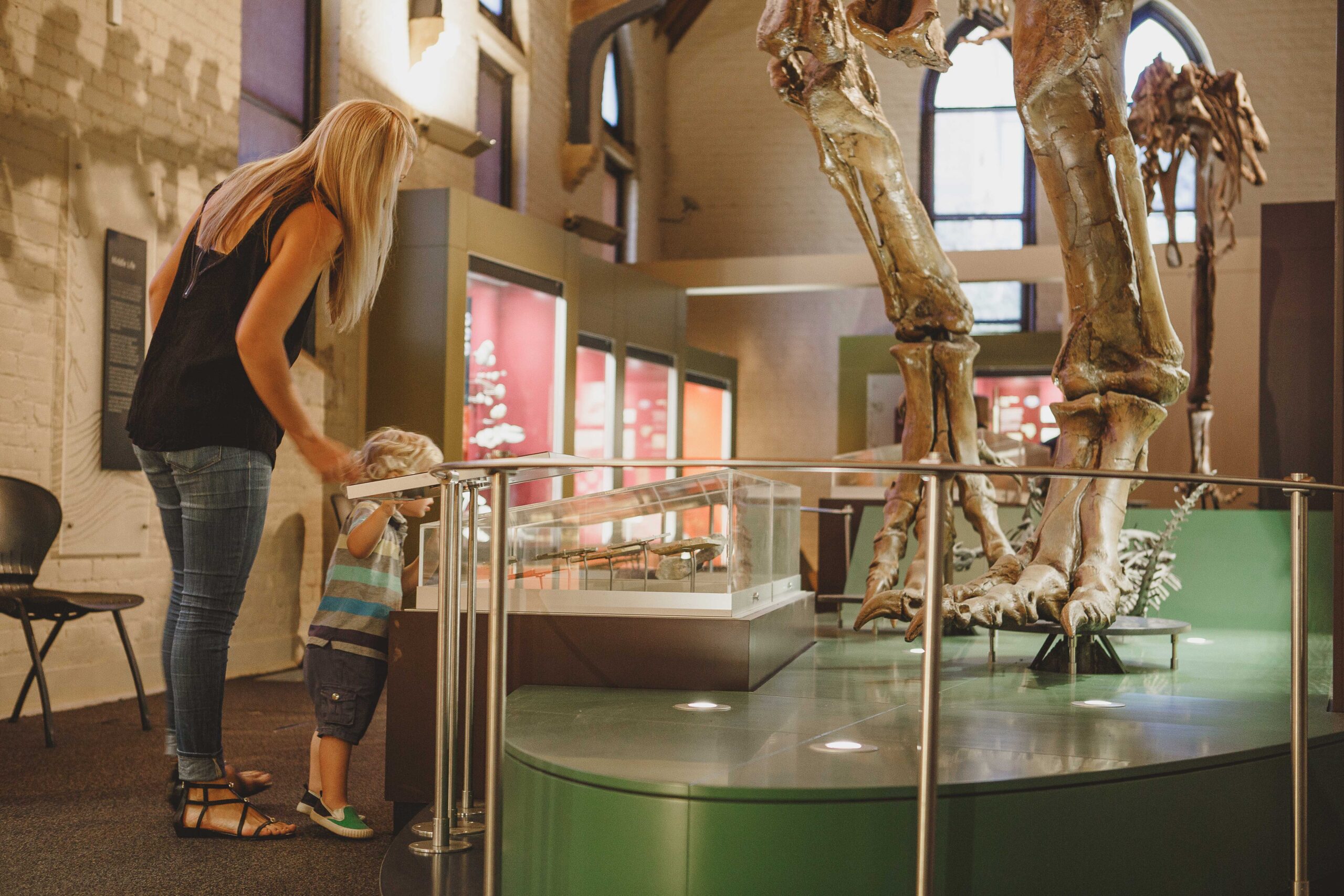Predator Falling Prey
The Tasmanian Tiger Found Near Dubbo
One million years ago, the owner of this jawbone and teeth prowled the grasslands in the area now known as Wellington, in the Dubbo region of central NSW. It was the carnivorous Australian marsupial and specialised predator known as a thylacine (Thylacinus cynocephalus), Tasmanian Tiger, or Tasmanian Wolf. A striped dog-like animal, it had a powerful jaw lined with 46 sharp teeth and primarily hunted rodents, birds, and other marsupials.
After this thylacine died, its remains became dismembered, and its bones were fragmented by the flood waters of a nearby river, along with the remains of thousands of other animals. Likely during a series of floods between about 950,000 and 750,000 years ago, raging water swept the bones into nearby limestone caves along with huge quantities of red silt. Inside the cave, the silt slowly, slowly, hardened into rock, trapping this thylacine jawbone in a rocky menagerie of bones.
The Wiradjuri people, who lived in the Dubbo region for tens of thousands of years, more than likely knew the curious contents of what is now known as the Wellington Caves. About 3000 to 3500 years ago, the dingo arrived on the continent and competed with the thylacine for hunting grounds. The stripy predator was driven into extinction on the mainland, but some remained isolated in Tasmania.
In 1830, the fossils were identified by Europeans and palaeontologists were intrigued by the incredible diversity of ancient animals. Among the preserved remains were extinct megafauna like the pouched lion, gigantic wombat-like diprotodon, and a seven-metre-long goanna. Wellington Caves is known today as one of the largest and most important deposits of Pliocene to Pleistocene mammal fossils in the world, ranging in age from 30,000 to 4 million years old.
The arrival of Europeans in Tasmania and subsequent increase of disease, hunting, and climate change proved to be the final nail in the thylacine’s coffin. The last known Thylacine died in 1936, in Hobart Zoo.





